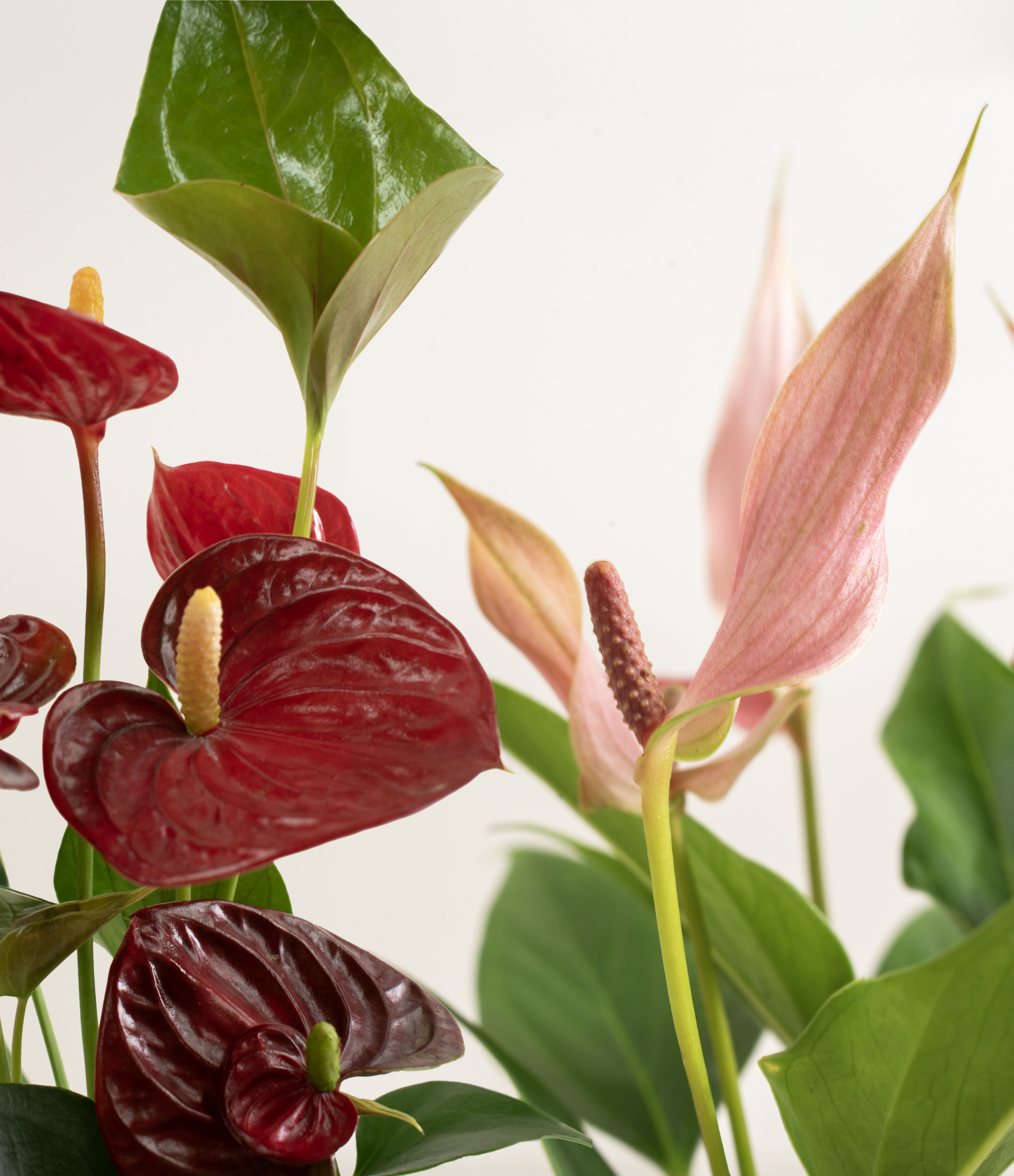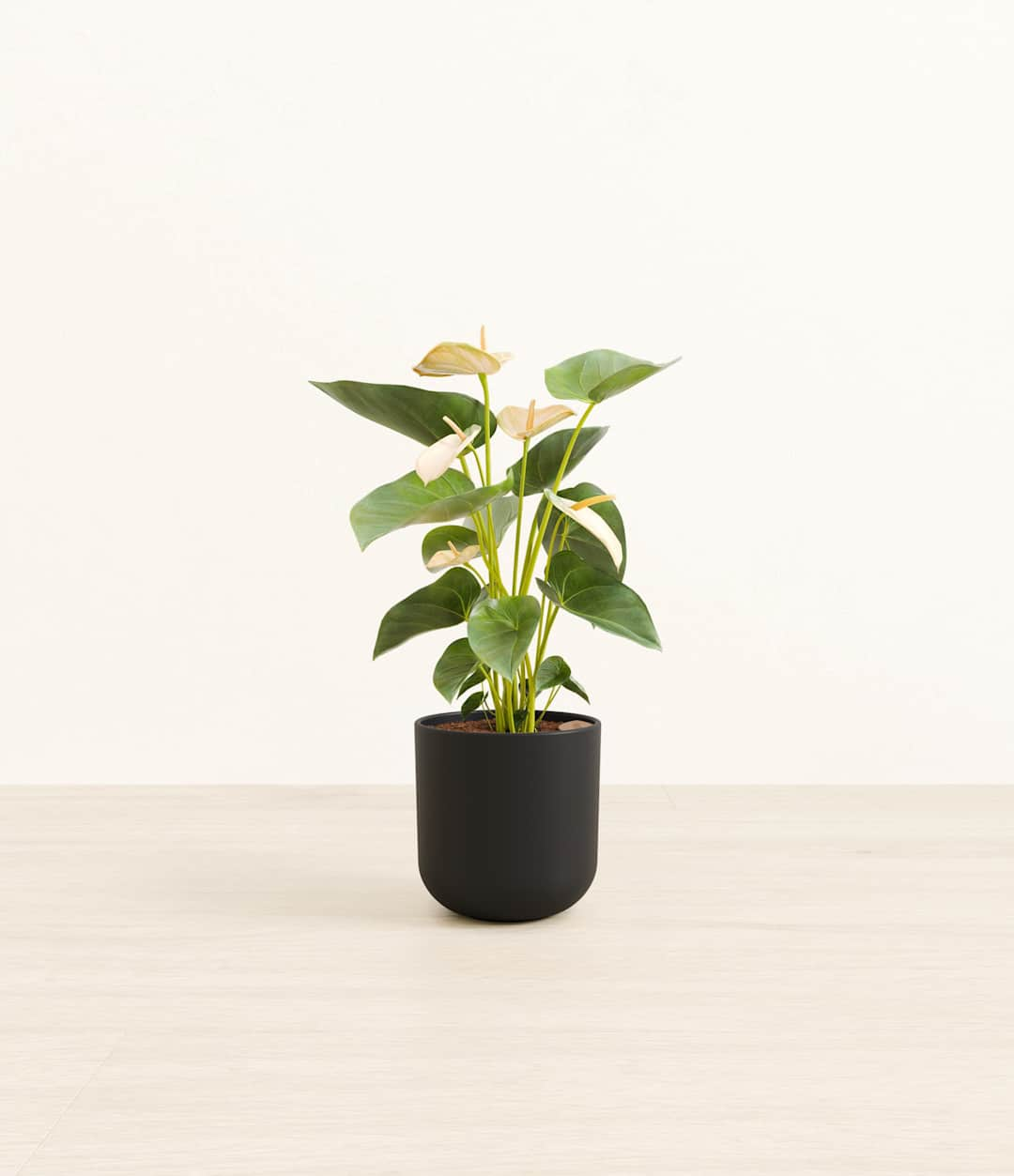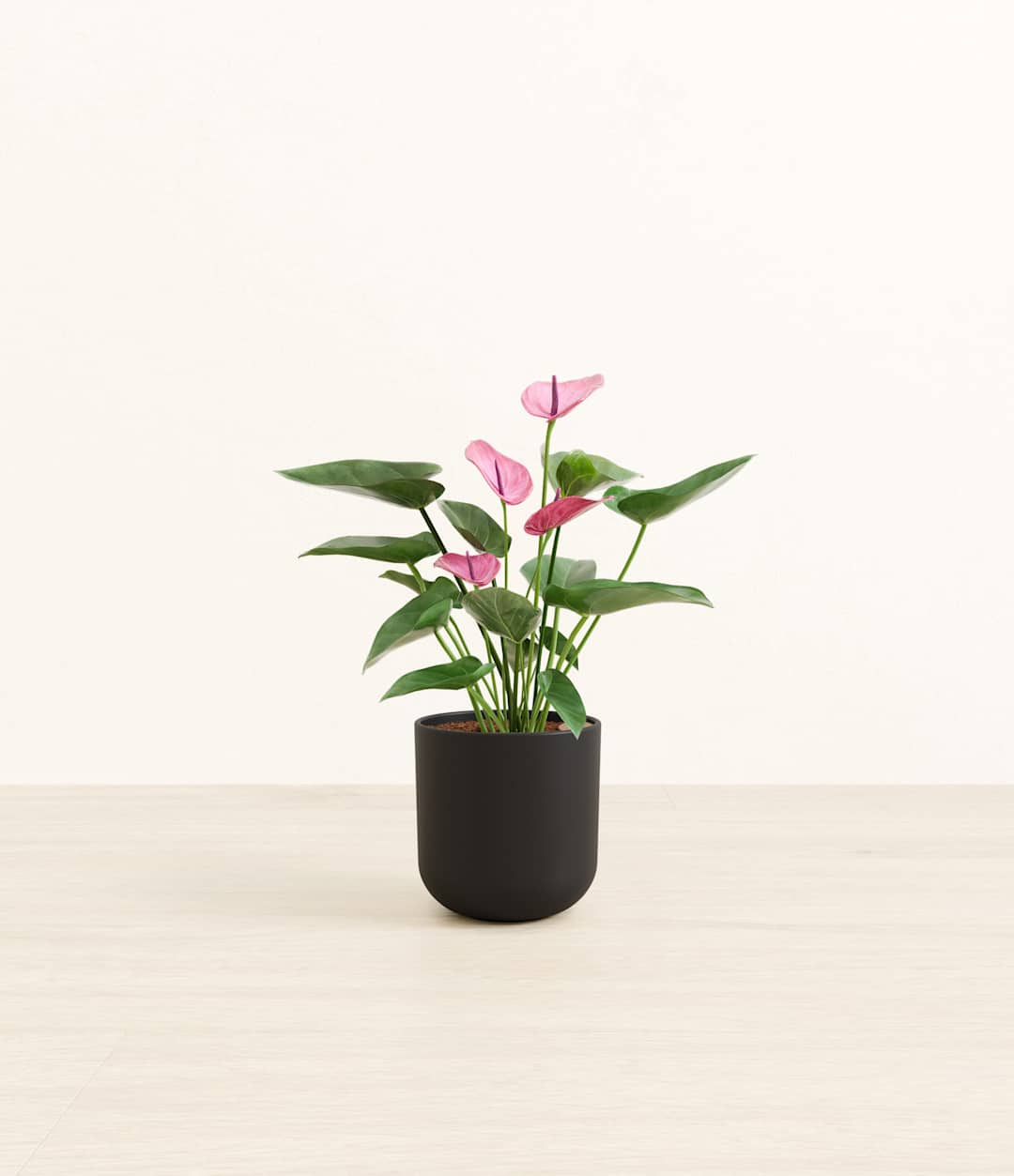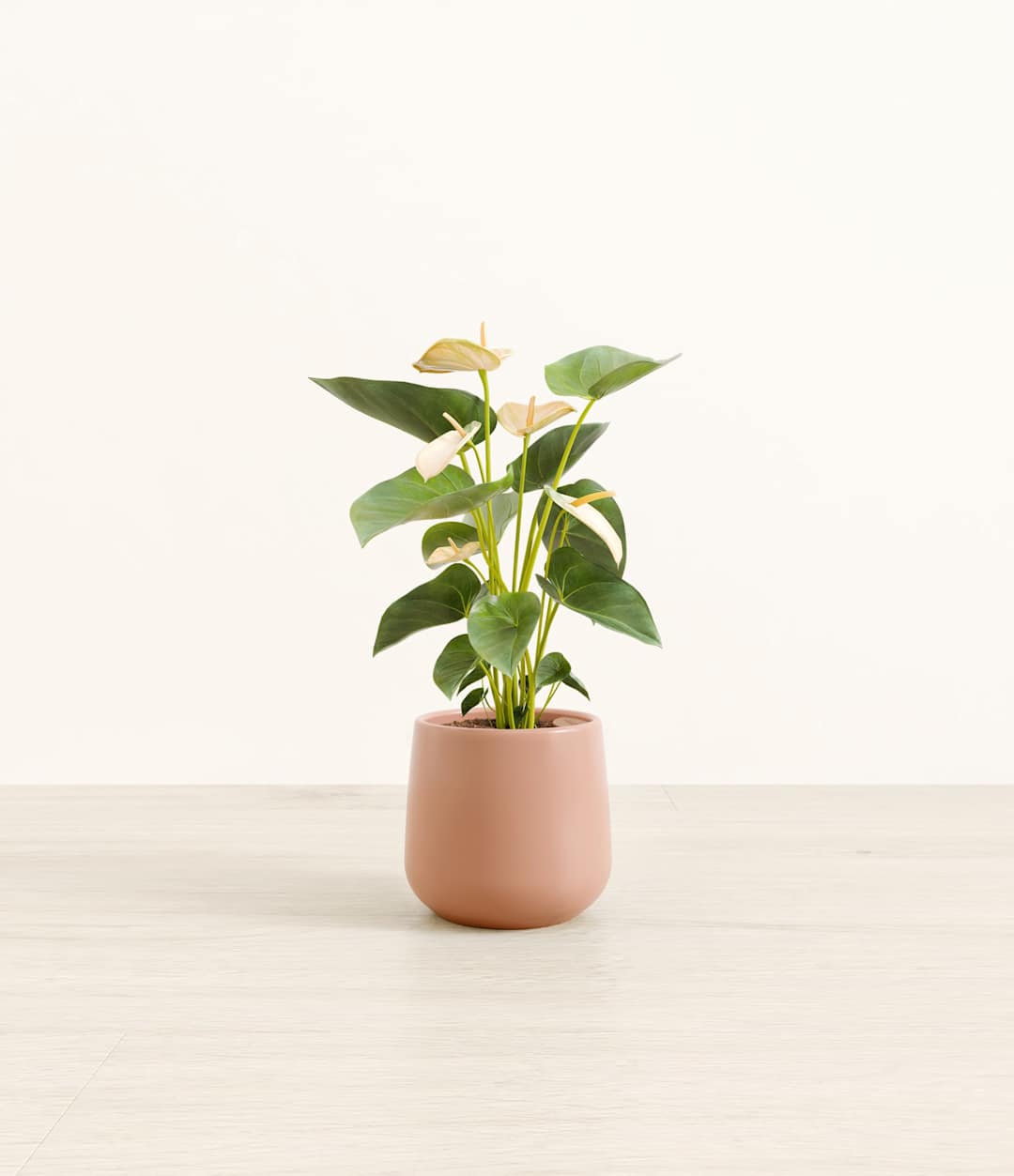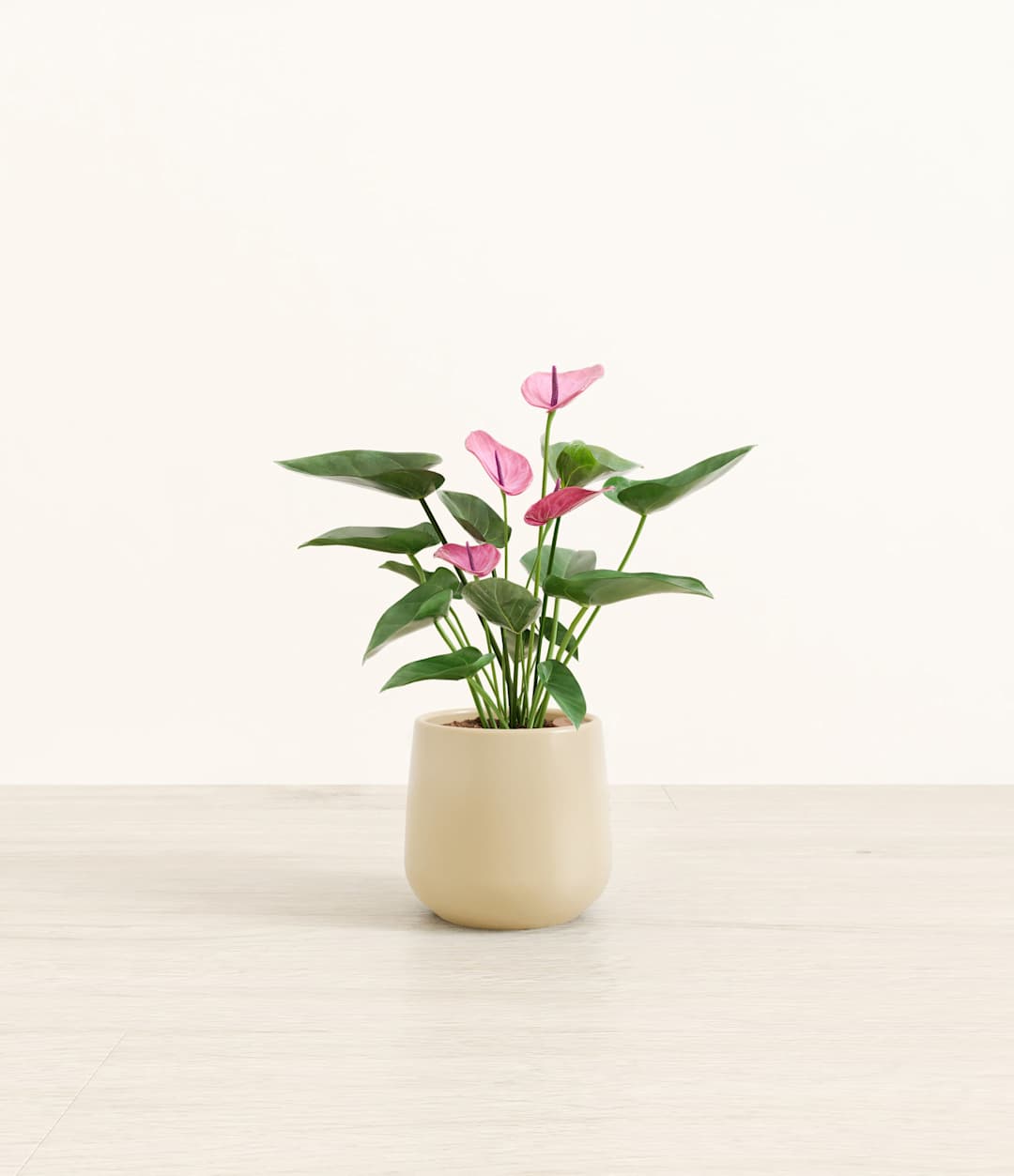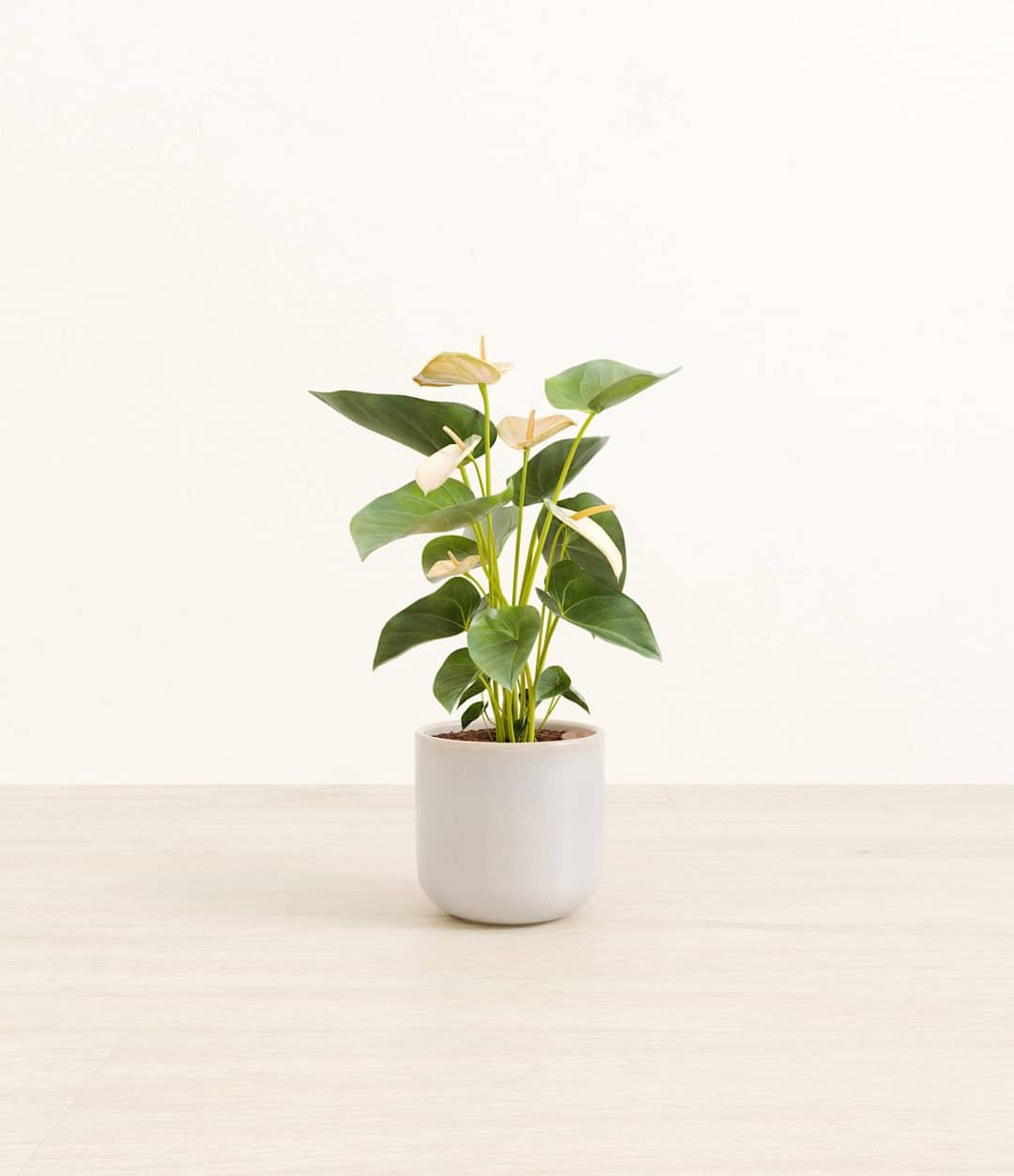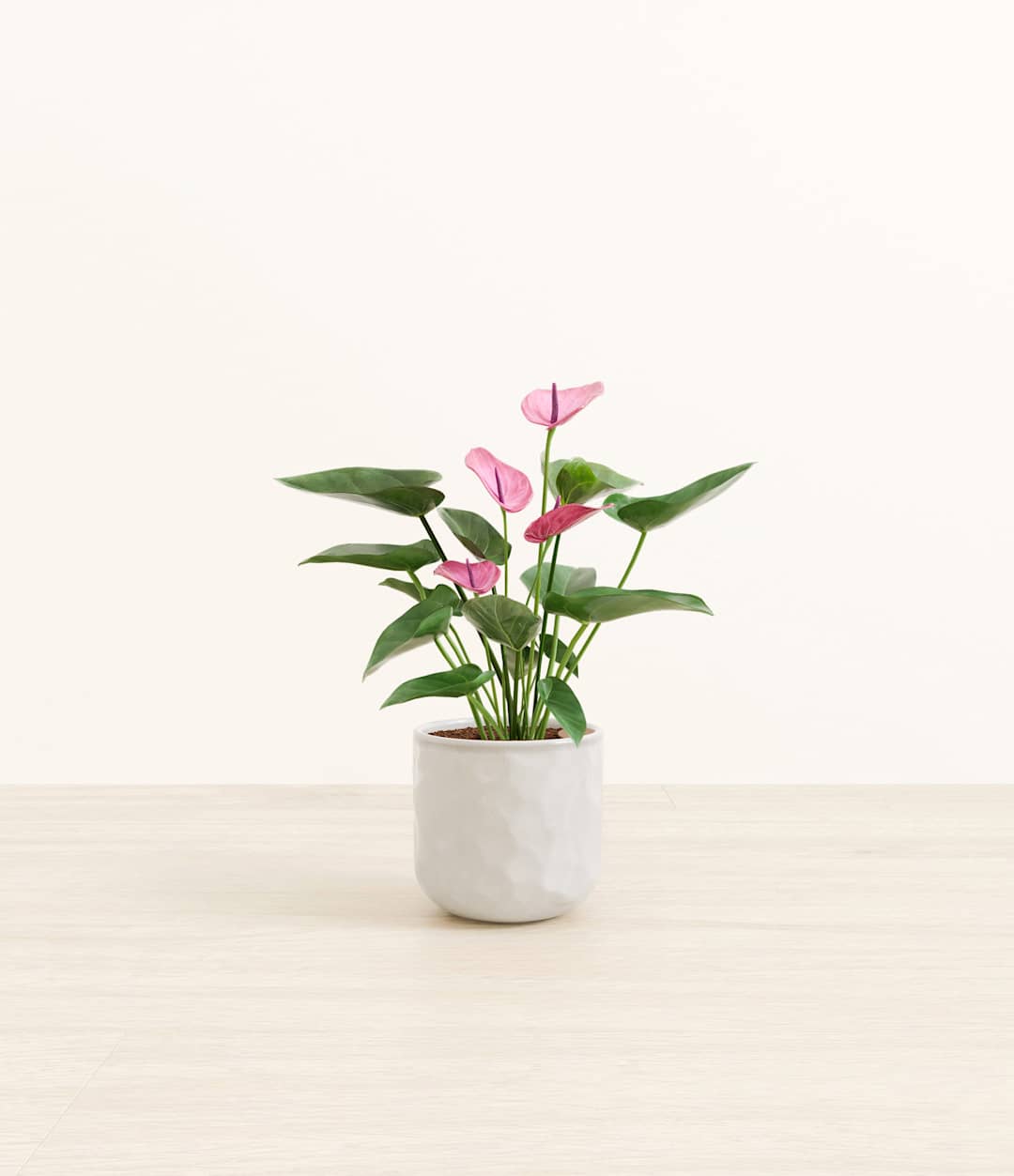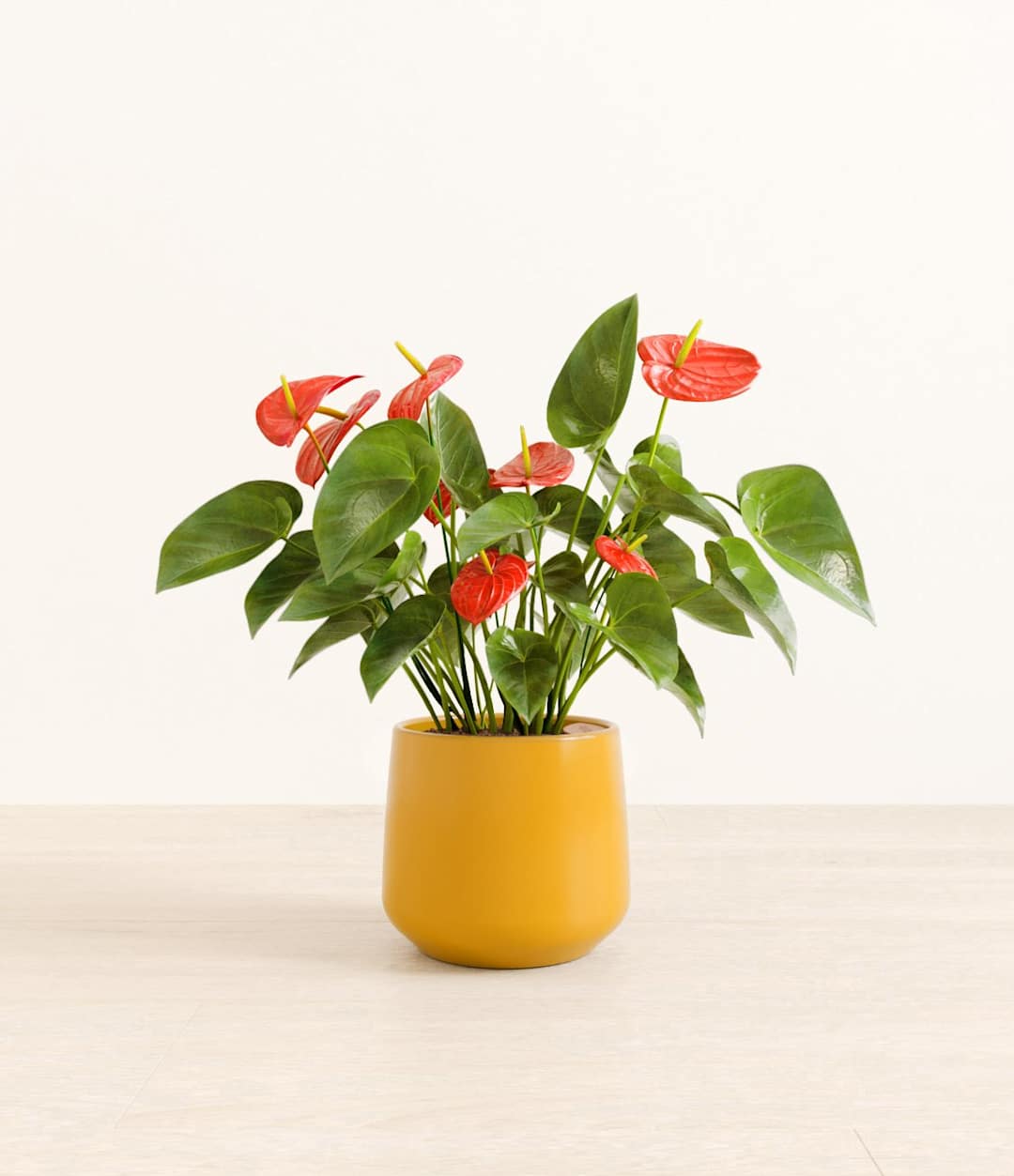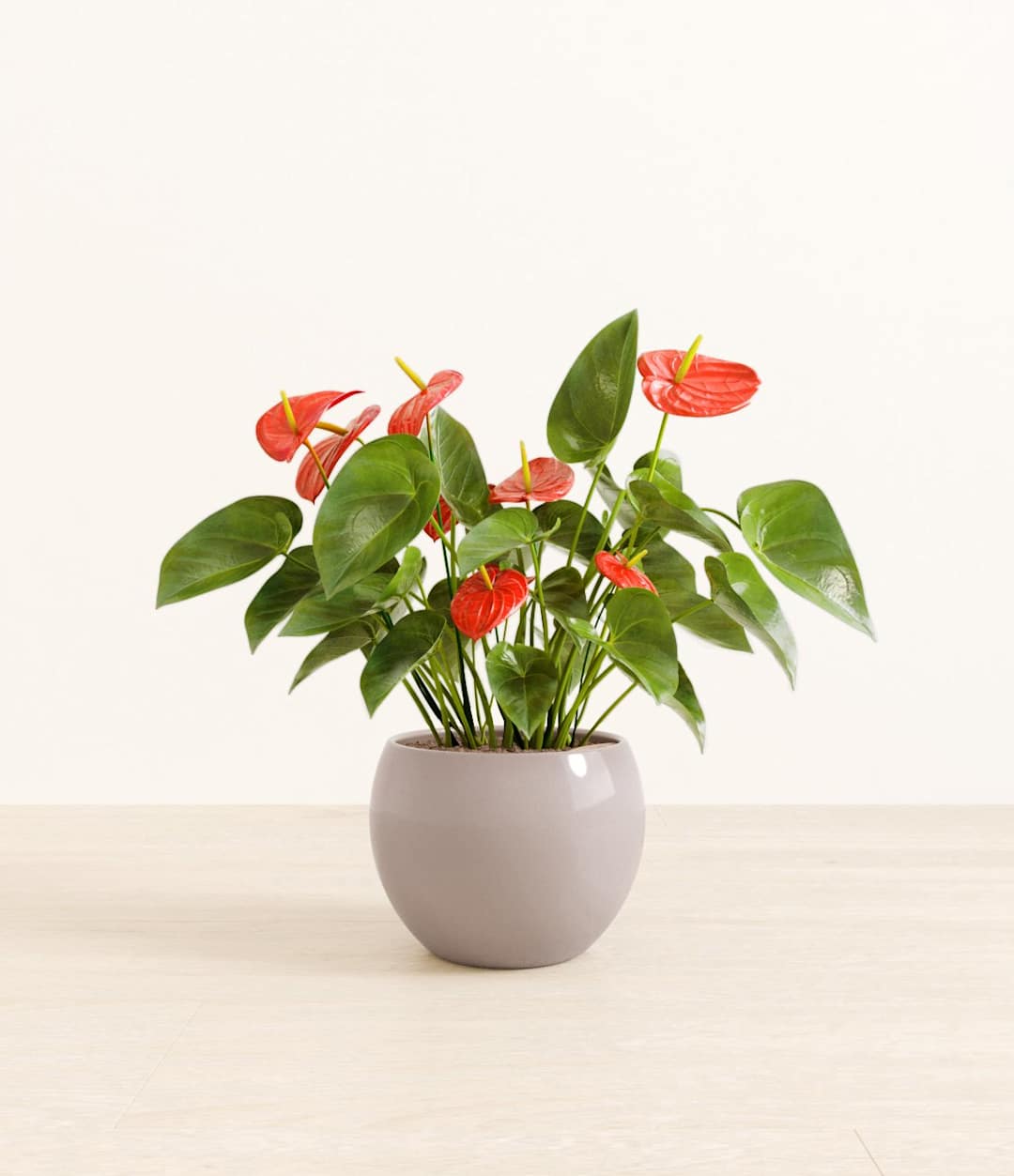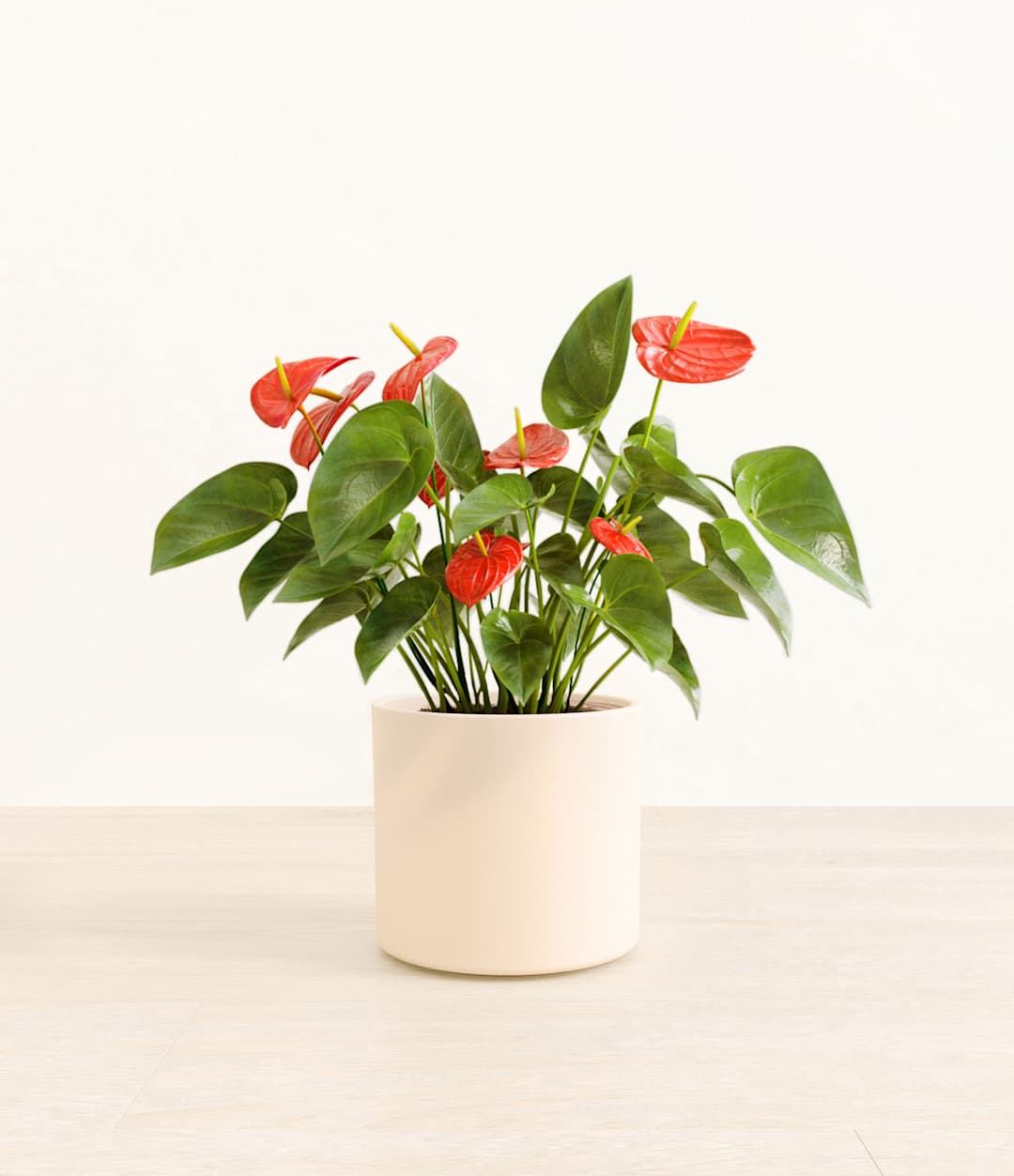About Anthurium
Native to the Americas and Caribbeans, this tropical evergreen beauty brings out the best and brightest in any space it inhabits. The colorful heart-shaped waxy leaves, called spathes, act as protectors for its straight spike, called spadix, where very small flowers grow in its bloom. Thanks to its long-lived, heart-opening charm, Anthurium is the quintessential symbol of generosity and kindness, making it a perfect gift for those you love the most. It is cherished for its long blooms, lasting anywhere from eight to twelve weeks.
Other common names
- Flamingo flower
- Tailflower
- Painter's palette
- Little boy plant
- Oilcloth flower Laceleaf
How Often Should I Water My Anthurium
With easyplant, watering your Anthurium is simple. Make sure to check the easyplant reservoir once a month and fill it when empty, and you're all set! If you are tending to Anthurium without the benefit of an easyplant, warmer temperatures, lower humidity, and the size of your pot can greatly affect the frequency with which you’ll need to water your plants.
If you’re watering anthuriums without assistance, you’ll need to prevent the soil from completely drying out between waterings. If located at a well-lit spot, try watering your anthurium approximately once per week in the warmer months, and allow the topsoil to dry before you repeat. Never overwater; during winter, it may be necessary to reduce the frequency.
Anthurium Light Needs
Anthurium grows best in a space with bright indirect light, where the sun rays are diffused, and can also adapt to spaces with bright direct light, where the sunlight streams inside directly. Avoid placing it in spaces with low light or spaces without natural sunlight.
Anthurium Plant Care
On your Anthurium’s first few days at home, it may lose several leaves, or the leaves will turn brown. This is no reason for concern. Simple shake off or cut the leaf, and look forward to new and better adjusted leaves to grow.
To help it grow optimally and evenly, occasionally dust the leaves and rotate the pot by a ¼ turn once a month.
As with many flowering plants, your Anthurium will benefit from 'deadheading'. When the blooms start to fade and die off, remove them. This practice helps the plant redirect its energy toward producing new blooms and maintaining overall health. Also, feel free to prune the stems and spent flowers to assist the new growth. Remember, removing fading blooms is a normal part of caring for blooming plants.
How Big Do Anthurium Plants Grow?
Anthurium is loved for its long blooms, lasting anywhere from eight to twelve weeks, with a few months without a bloom in between. As a bloom comes to its end, former leaves and flowers will dry up to make room for new growth. The more light Anthurium receives, the more flowers will grow and the faster it will grow, reaching about twelve inches tall.
Average-sized anthuriums are often 1 to 1.5 feet tall and nearly one foot wide. While their size varies according to different species, the largest anthuriums peak at around 2 feet tall and 1 foot across. You can also encourage anthuriums to remain small by manipulating their environmental conditions.
Temperature & Humidity
The ideal anthurium temperature range is between 60F and 90F. Warmer temperatures will cause stress, while cooler ones will discourage growth. Likewise, the ideal anthurium humidity is around or above 50% - which describes most households. If you live in a particularly arid climate, you can take some simple steps to alleviate your plants.
Are Anthurium Toxic for Pets & Kids?
Anthurium may be moderately toxic if ingested, so be sure to keep away from curious children and pets.
Because these plants are rich in calcium oxalate crystals, when ingested, they create a painful burning sensation in the mouth, and sometimes produce blisters and swelling. Exposure to calcium oxalate can make your voice hoarse. In very rare circumstances, exposure can trigger swelling in the airway, making it more difficult to breathe.
Troubleshooting Common Problems with Anthurium
If you notice leaves becoming spotted in black or yellow, relocate the pot to a more brightly lit area. If you notice a leaf becoming weak or droopy, cut to remove the entire leaf and relocate the pot to a more brightly lit area. If you notice leaves becoming too long or leggy, relocate the pot to a less brightly lit area.
Frequently Asked Questions about Anthurium Plant
Do anthuriums need direct sunlight to grow?

Tropical plants like anthuriums thrive when they receive roughly 12-hours of light on a daily basis. Direct sunlight isn’t necessary to see growth because these plants can do well in partially shaded habitats. But a couple hours of direct sunlight can help them to thrive, provided they spend most of their time in partial shade. Under a growing light, you may want to provide as much as 16-hours of lighting.
How do you keep anthuriums blooming?

Anthuriums typically bloom during late spring and early summer. When provided with the right lighting conditions, like a west-facing window, the growing season will trigger blooming without your intervention. If you’d like to encourage your anthurium to keep blooming, be sure it receives enough light and water, and prune away old blooms as they expire.
Are anthurium easy to take care of?

Anthurium don’t require an intense regimen of upkeep, however, they do require certain conditions to keep them vibrant and thriving. Anthurium typically enjoys a moderate, room temperature environment, or one that’s a tad on the warmer side. They prefer bright indirect light, average to high humidity, and a well-draining potting soil to keep them moist. Under those conditions, Anthuriums are quite easy to look after.
